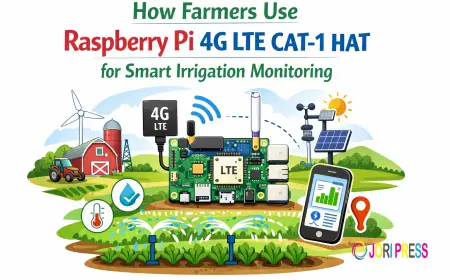Water Infrastructure Development Market 2030 Report: Size, Key Growth Trends & Industry Forecasts
Industry Key Highlights
According to TechSci Research report, “Water Infrastructure Development Market – Global Industry Size, Share, Trends, Competition Forecast & Opportunities, 2020-2030F”, The Global Water Infrastructure Development Market was valued at USD 25.84 Billion in 2024 and is expected to reach USD 46.44 Billion by 2030 with a CAGR of 10.10% during the forecast period. This surge is fueled by a combination of demographic shifts, increasing environmental regulations, and the need for technologically advanced water systems.
Request For Sample Copy of Report For More Detailed Market insight: https://www.techsciresearch.com/sample-report.aspx?cid=29819#requestform
Key developments shaping this industry include:
-
Rising adoption of smart water technologies and digital infrastructure
-
Escalating government and private investments in urban water supply, stormwater management, and wastewater treatment
-
The emergence of green infrastructure in urban planning to combat pollution and flooding
-
A growing focus on climate-resilient infrastructure and water reuse technologies
-
Strategic public-private partnerships enabling scalable infrastructure development
With water security fast becoming a global priority, infrastructure development is not just about supply—it is about building sustainable ecosystems, ensuring quality, and promoting responsible management of natural resources.
Browse over XX market data Figures spread through XX Pages and an in-depth TOC on the " Global Water Infrastructure Development Market"@https://www.techsciresearch.com/report/water-infrastructure-development-market/29819.html
Emerging Trends
1. Smart Water Technologies
One of the most revolutionary trends reshaping the water infrastructure landscape is the integration of digital and IoT-based solutions. Technologies such as smart meters, AI-based analytics, IoT sensors, cloud-based SCADA systems, and digital twins are redefining how utilities manage and distribute water.
These systems allow:
-
Real-time monitoring of water quality, pressure, and flow
-
Instant detection of leaks and anomalies
-
Improved customer billing and service reliability
-
Predictive maintenance of pipelines and other assets
Utilities worldwide are embracing data-driven infrastructure models, transforming aging water networks into intelligent ecosystems. This trend is gaining rapid traction, especially in developed economies and urban centers with legacy systems in urgent need of modernization.
2. Green and Nature-Based Solutions
Urban expansion has significantly disrupted natural water absorption processes. In response, cities are investing in green infrastructure to manage stormwater and enhance climate resilience. These include:
-
Bioswales and rain gardens for natural filtration
-
Permeable pavements that reduce runoff
-
Green roofs that lower urban heat and absorb rainfall
These innovations not only manage excess water but contribute to biodiversity, air quality, and community well-being, making them integral to sustainable urban design.
3. Climate-Resilient Infrastructure
As climate change brings more unpredictable and intense weather patterns, flood control systems, drought mitigation solutions, and resilient pipeline infrastructure are being prioritized. Investments in infrastructure are increasingly being guided by resilience frameworks, often aligned with national adaptation plans and smart city missions.
4. Water Reuse and Circular Economy
Driven by water scarcity and sustainability goals, the concept of a circular water economy is taking root. Governments and industries are investing in wastewater treatment facilities that can purify and repurpose water for:
-
Agricultural irrigation
-
Industrial cooling
-
Urban landscaping
-
Toilet flushing
This closed-loop approach reduces dependence on freshwater resources and mitigates water stress, especially in arid regions.
5. Digital Twins & Predictive Infrastructure Planning
Advanced modeling tools such as digital twins are helping planners simulate various scenarios and stress-test infrastructure performance under different conditions. This promotes proactive maintenance and reduces long-term operational costs.
Market Drivers
1. Rapid Urbanization
The global population is becoming increasingly urban, putting immense pressure on aging water infrastructure. Cities across the globe are investing in new supply systems, stormwater management networks, and wastewater treatment plants to keep pace with rising demand.
2. Water Scarcity
Water stress is affecting billions globally. Declining freshwater availability, over-extraction of groundwater, and contamination of water sources are pushing governments to invest in integrated water resource management (IWRM) and efficient infrastructure.
3. Increasing Regulatory Compliance
Tighter regulations on water quality, discharge standards, and environmental impact are compelling municipalities and industries to upgrade existing systems and adopt innovative water purification and monitoring technologies.
Customers can also request for 10% free customization on this report.
4. Infrastructure Modernization
In many countries, water infrastructure is decades old and prone to failures. The modernization of pipes, valves, pumping stations, and treatment facilities is being fast-tracked using modern materials, energy-efficient components, and automated control systems.
5. Government and International Funding
International agencies and governments are offering multi-billion-dollar packages to stimulate infrastructure growth. For example, initiatives like India’s Jal Jeevan Mission and China’s urban rehabilitation programs are mobilizing capital and expertise toward long-term improvements.
Contact US:
Techsci Research LLC
420 Lexington Avenue, Suite 300,
New York, United States- 10170
Tel: +13322586602
What's Your Reaction?
 Like
0
Like
0
 Dislike
0
Dislike
0
 Love
0
Love
0
 Funny
0
Funny
0
 Angry
0
Angry
0
 Sad
0
Sad
0
 Wow
0
Wow
0


















































